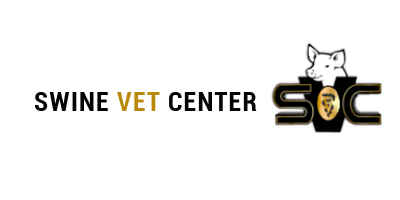

In the last couple of years, coccidiosis in young pigs has been a hot topic because the disease management tools available in the past have not been available due to supply chain issues, she added.


Typically, the classic presentation of a coccidia infection on a sow farm is a yellow and pasty diarrhea that develops around 7–14 days of age in piglets. The diarrhea is very noticeable – it’s thicker, not a watery diarrhea that would go through the flooring – and it builds up in the crate and environment, she explained.
Coccidiosis generally does not cause mortality in piglets but does cause significant loss of gain – so it wouldn’t be surprising for pigs with a heavy coccidia infection to weigh 1–2 lbs. less at weaning than uninfected pigs. “It definitely hurts the gain of the pig, and when you talk about gain in pigs, that’s everything. How fast can I get them to market?” Bruner said.
Along with coccidia challenges, secondary infections are possible because enteric cells of the gut become disrupted, which allows other enteric bacterial and viral pathogens to invade the intestinal lining. These secondary infections are more likely to cause mortality, especially if the pig becomes really chronic.
Prevention and control
It takes seven days for coccidia to mature and sporulate oocytes, which are then shed allowing infection to spread. Anti-coccidial or anti-protozoal medications such as ponazuril (trade name Marquis) have been developed for other animals such as horses and companion animals that kills coccidia at the right time in its life cycle so sporulation does not occur.
With a valid veterinarian-client-patient relationship (VCPR), veterinarians can recommend these medications for use in piglets. Oral administration of ponazuril to piglets starting on day 3 would break the sporulation cycle and eliminate coccidia from the farrowing unit environment.
However, due to supply issues, product availability is low and what is available typically goes toward horses. This has left the swine industry without many preventative tools, Bruner said.
Given that coccidia are exceptionally hardy organisms that build up in the environment, if a producer never has a way to decrease coccidia shedding or decrease the environmental load in their barns, it just continues to build up. “I think that’s part of the reason why we’ve more recently had problems in the winter, when we wouldn’t typically have them, because we haven’t been able to knock down that cycle,” Bruner added.
There are other products developed for cattle and poultry species that have been tried under the VCPR provisions that allow the use of medications off-label, but those products are not coccidiacidal – so they don’t kill the coccidia – but are coccidiostatic, meaning they inhibit coccidia’s life cycle but don’t eliminate it.
Generally, coccidiostats need to be fed continuously to keep the coccidia at bay so disease can be prevented until the pigs are weaned off the farm. Bruner added that this option is labor intensive and not that effective, since the piglets really need to consume the coccidiostat for the entire period they’re in the farrowing unit, meaning the return on investment for this practice is not good.
By providing a coccidiostat, Bruner said clinically, the disease effects get better but the coccidia are not gone. “I think all it’s really doing is decreasing the environmental load to give you a chance to sanitize your way out of it,” she said, leaving the industry kind of stuck between a rock and a hard place.
Whitewashing


Instead, producers have moved to whitewashing – spraying hydrated lime and coating the crates and all of the contact areas that piglets would touch – to try to eliminate coccidia with a really high pH solution.
Bruner said whitewashing has been fairly effective, but the right amount of hydrated lime needs to be applied in a thick coating on all contact surfaces for it to work well.
With coccidia challenges extending throughout the year, producers may have to start applying whitewash earlier in the year, such as in March or April, and not wait until June or July when it gets hot and there already are coccidia problems, Bruner said.
Another key step, Bruner said, is to routinely inspect sanitization efforts – after sanitizing the room, ask “how good of a job did I do?” and then after the room is sprayed with whitewash, ask again, “how good of a job did I do?” Inspect what you would expect to see and how well you covered contact surfaces.
Post-weaning
After weaning, coccidia is less of a problem, but if secondary infections were present in the farrowing crate, there can be lingering effects in addition to other post-weaning stresses.
There is a portion of the population that doesn’t recover from a coccidia infection, but for the most part, it is mostly a weight-loss issue, depending on how fast the pig’s intestinal tract can heal. Any post-weaning infections with rotavirus or E. coli will just add fuel to the fire of health challenges.
According to Bruner, the key to managing coccidiosis is knowing when it will be at its peak and getting ahead of environmental contamination. Coccidia enter the farrowing house from animals – typically from gilts that may be shedding – so in theory, batch systems would have fewer issues.
Once coccidia gets into a farrowing house, it is hard to get out, but staying on top of sanitization practices and inspecting procedures to ensure full coverage will help minimize any health and performance challenges.





